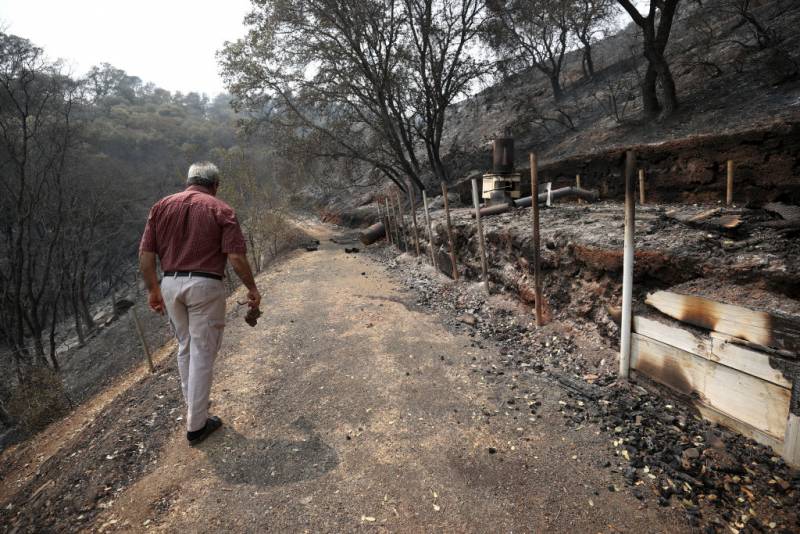Latest Developments
When separate fires are burning near each other Cal Fire often calls them “complexes.” Three such massive groups of fires are currently burning in and around the Bay Area:
- LNU Lightning Complex: Sonoma, Napa, Solano, Yolo, Lake counties (including the Hennessey, Gamble, Walbridge, Meyers and Green fires)
- SCU Lightning Complex: Santa Clara, Alameda, Contra Costa, San Joaquin, Stanislaus counties (including fires in the Deer, Calaveras and Canyon zones)
- CZU August Lightning Complex: San Mateo and Santa Cruz counties (including the Warnella, Waddell fires)
LNU Lightning Complex
Click on each of the following links to see each county's evacuation updates: Napa County, Solano County, Lake County, Yolo County and Sonoma County.
The LNU complex of fires, ignited by lightning strikes in Napa County on Aug. 17, consists of seven separate blazes burning in five different counties, including Sonoma, Napa, Solano and small sections of Yolo and Lake counties.
As of Friday morning, the complex was 35% contained and had grown to 371,249 acres, making it the third largest complex of wildfires in California history (in close contention with the SCU Complex), Cal Fire said. The group of blazes have so far claimed the lives of at least five people, injured at least four more and destroyed 1,080 homes and other buildings, while continuing to threaten 30,500 other structures.
Evacuation orders were lifted Thursday in some areas of Solano and Lake counties, with residents there allowed to return to their homes.
In the heart of wine country, evacuation orders in Napa and Sonoma counties were also lifted for about 35,000 people on Wednesday.
Cal Fire said there still was “extreme fire behavior” in several areas of the complex that continues to challenge firefighting efforts. Portions of the more than 300,000-acre Hennessey Fire burning in northern Napa, Lake and Solano counties continued to advance in several directions, with ongoing major firefighting efforts directed at the northern end of the fire as it approaches Middletown. The fire was 33% contained as of Friday morning.
In Sonoma County, crews made slow but steady progress fighting the more than 55,000-acre Walbridge Fire — also part of the LNU Complex — burning South of Lake Sonoma, and were aided by additional muscle from 250 National Guard service members who arrived in Santa Rosa Wednesday evening.
Sonoma County officials on Tuesday lifted evacuation orders for thousands of people, allowing them to return to their homes.
Still, that fire has destroyed scores of homes and other buildings and remains a tough fight, Cal Fire operations section Chief Chris Waters said.
“Heavy fuels, steep and broken terrain, it's very difficult terrain to work in. Also a lot of homes and a lot of structures we have to work around,” Waters said. But, he added, crews “continue to make good progress in tying together vineyards, people's backyards, strategic points.”
